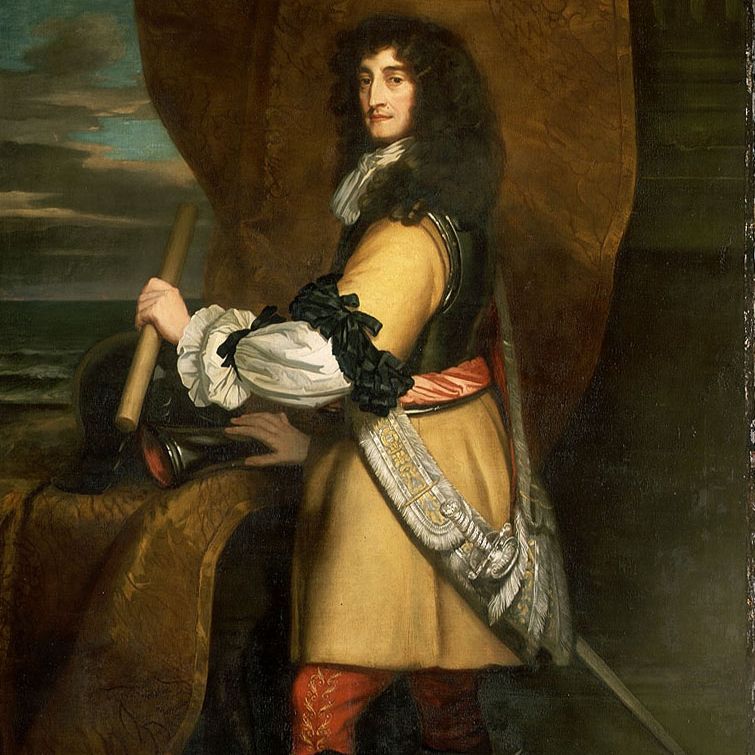Just before his first birthday, Prince Rupert – the third son of Frederick the Fifth, Elector of the Palatinate – became a refugee.
His father’s assumption of the throne of Bohemia prompted an invasion by the forces of the Hapsburg Emperor at the beginning of what became known as the Thirty Years War and, in November 1620, the royal family was driven into exile at the court of the Prince of Orange in Holland, where Rupert spent his childhood growing up.
In 1633 at the age of 14, he accompanied the Prince of Orange on campaign at the siege of Rhynberg. In 1635, he joined the Prince's lifeguard during the invasion of Brabant. The following year he accompanied his elder brother Charles Louis, now the Elector of the Palatinate, on a visit to England. Rupert made a good impression on his uncle, King Charles the First, was awarded an honorary MA at Oxford and had his portrait painted by Van Dyck.
Rupert returned to military service with the Prince of Orange in 1637 and was present at the siege of Breda. He then joined Charles Louis and an army of Scottish mercenaries led by King James (later Lord Eythin) in an invasion of Westphalia, which was defeated by General Hatzfeld of Austria at the battle of Vlotho in October 1638. James King placed the blame for the defeat on Rupert's impetuosity in charging the enemy.
Rupert was taken prisoner at Vlotho and held at Linz Castle in Austria for three years. Resisting attempts to convert him to Catholicism, Rupert alleviated his years of captivity by learning the art of engraving, by studying military textbooks and manuals, and by a love affair with the daughter of the governor of Linz.
Thanks to the diplomatic efforts of his uncle, King Charles of England, he was released in October 1641 on condition that he would never again bear arms against the Emperor.
The outbreak of civil war in England presented Rupert with an opportunity to continue his military career, and in August 1642, Rupert arrived in England to fight for the King.
At first Rupert was welcomed as an experienced soldier. His charisma had an inspirational effect on the Royalist cause, but his youthful arrogance and foreign manners soon alienated many of the King's senior advisers, particularly as Rupert was exempted from taking orders from anyone but King Charles himself.
Rupert's military achievements early in the war earned him a fearsome reputation.
Some Roundheads credited him with supernatural powers – at least according to Royalist propaganda. His dog, Boye, which accompanied him everywhere, was said to be the Prince's "familiar spirit".
Rupert was certainly the most energetic of the Royalist commanders.
Although he was a member of the King's council of war, he was often away directing operations around the country. He was active in the Midlands during the early part of 1643 and captured Bristol in July. In 1644, he was appointed President of Wales with responsibility for both the civilian administration and the military organisation of Wales and the Marches. He proved to be an efficient administrator and still undertook daunting military duties, marching to relieve Newark in March 1644 and seizing most of Lancashire for the King in June. He then set out across the Pennines to relieve the siege of York. Although the York March succeeded in its principal objective of lifting the siege, ambiguous orders from the King and a lack of co-operation from his colleagues contributed to Rupert's defeat by the combined armies of Parliament and the Scottish Covenanters at Marston Moor in July 1644, which lost York and the north of England to the Royalists.
In November 1644, Rupert was appointed Captain-General of the Royalist army. He insisted that the Prince of Wales be nominally appointed commander-in-chief, but his promotion intensified the hostility between Rupert and several of the King's advisers, notably Lord Digby. He also clashed with the erratically brilliant Lord Goring, who was granted an independent military command by the King, thus undermining Rupert's authority. These divisions frustrated Rupert's attempts to co-ordinate the Royalist war-effort during the final year of the English Civil War. At the head of the main Royalist field army, Rupert stormed and captured Leicester in May 1645, but was decisively defeated by Fairfax's New Model Army at the Battle of Naseby the following month.
After Naseby, Rupert realised that the Royalist cause was hopeless and advised King Charles to seek a treaty with Parliament. The King, however, believed that he could still win the war. Encouraged by Digby, he came to believe that Rupert was plotting against him. When Rupert surrendered Bristol to Fairfax in September 1645, King Charles angrily dismissed him from his service. Insulted at the stain on his honour, Rupert forced his way into the King's presence at Newark in October 1645 and demanded to be heard before a court-martial. The verdict cleared Rupert's name, but he had become estranged from the King and played no further part in Royalist military campaigns.
Following the fall of Oxford in June 1646, Parliament banished Rupert and Prince Maurice from England.
When Charles the Second was Restored to the throne, Rupert returned to England. He was given the titles the Duke of Cumberland and Earl of Holderness. He never married, but left two illegitimate children: his mistress Frances Bard bore him a son, Dudley Bard, in 1666; his second mistress, the actress Peg Hughes, bore him a daughter, Ruperta, in 1673.
Prince Rupert died on 29 November 1682 at his house at Spring Gardens near the Palace of Whitehall after an attack of pleurisy.
